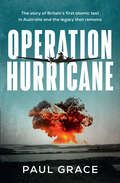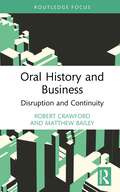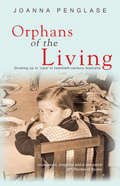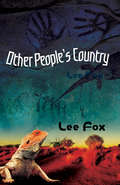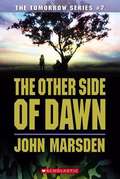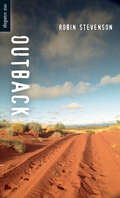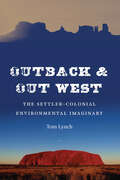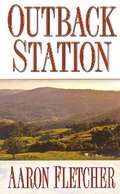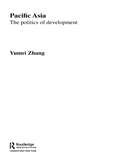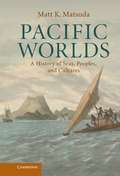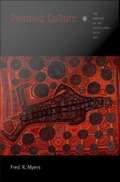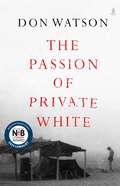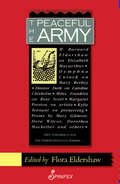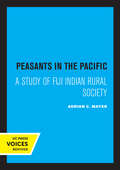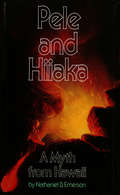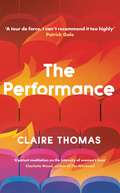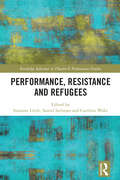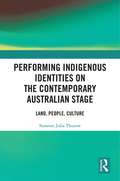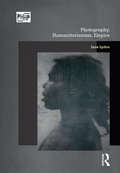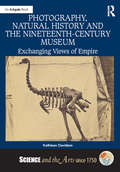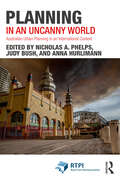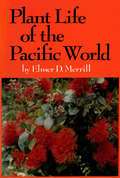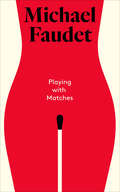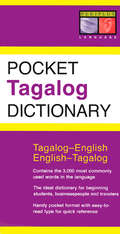- Table View
- List View
Operation Hurricane: The story of Britain's first atomic test in Australia and the legacy that remains
by Paul Grace'I remember seeing a flash, I turned around and heard a roar like a train approaching in a tunnel. Then a tremendous crack like a whiplash passed directly overhead. I saw a mushroom cloud ... There was black and white smoke, orange and red flames ascending through the centre of the mushroom.' RAN Able Seaman Vince Douglas, participant in Operation HurricaneAt 8.00 a.m. on Friday 3 October 1952, Britain's first atomic bomb was detonated in the hold of a surplus frigate, HMS Plym, moored in the Montebello Islands, 50 miles off the North West Coast of Western Australia. The blast vaporised the Plym, produced a mushroom cloud 2 miles high, and covered the islands and parts of the Australian mainland with fallout. The test, codenamed Operation Hurricane, was the culmination of years of top-secret planning in London and Canberra and months of clandestine preparations at the site. One of the largest peacetime military operations in Australian history, its success shifted the balance of power in the Cold War and briefly rejuvenated the fading British Empire.Painstakingly pieced together from declassified government documents and first-person accounts by surviving participants, Operation Hurricane tells the story of Britain's first nuclear test from the point of view of the men on the ground: soldiers, sailors, airmen and civilians. It delves into the historical context of the Cold War and examines the controversial legacy of the atomic tests, including the impact of fallout on servicemen, Aboriginal peoples and the environment, and Australia's relationship with the United Kingdom.
Oral History and Business: Disruption and Continuity
by Robert Crawford Matthew BaileyThis book introduces business historians to oral history methodologies and approaches. Using four distinct oral history case studies to explore ideas of disruption and continuity in business history over the second half of the twentieth century, Robert Crawford and Matthew Bailey demonstrate how critical engagement with oral history approaches serves to enhance and enliven business history as well as its relationship with other historical fields. The focus on disruption is used to encompass a broad set of processes such as technological change, the impact of external forces, informal business networks, social constructions of gender, knowledge transfer, firm adaptability and cultural change. The use of oral histories to interpret responses to disruption in the past, and to explore the features characterising business continuity, provides an opportunity to consider the human dimensions, subjective experiences and personal insights of workplace, firm and industry change. It also sheds light on the ways that people and firms respond to disruptive forces through innovation and adaptation – both successfully and unsuccessfully. This succinct and accessible account is essential reading for business historians with little experience in using oral history, as well as those looking to gain deeper insights from their oral history data.
Orphans of the Living: Growing Up in 'care' in Twentieth-century Australia
by Joanna PenglaseDrawing on interviews, submissions to the Senate Inquiry, and personal experience, this revealing documentation describes, for the first time, the experience of Forgotten Australians from the perspective of the survivors. In August 2004, Parliamentary senators wept as they presented the report from the Senate Inquiry into the treatment of children in care. Half a million children grew up in “care” in 20th-century Australia, and most often these children lived with daily brutal physical and emotional abuse in the sterile environment of an institution. Unraveling with tenderness, compassion, and intellect the seemingly explicable accounts as to how and why this occurred this study reveals the profound personal costs to the children involved—and the huge social and economic ramifications of past policies.
Other People's County
by Lee FoxFifteen-year-old Lola lives in a quiet, rural town with her mother, her over-achieving older brother, Daniel, and her annoying but lovable younger brother, Toby. When Lola?s mother receives an offer of a few months? work as a store manager on a remote Aboriginal community, the family ? except for Daniel who stays home to finish exams ? fly to Wandana with a sense of anticipation and adventure. But Wandana is no holiday resort. In the red dust and blazing heat of central Australia, Lola and her family are confronted with enormous social and cultural differences, as well as a dark form of racism they have never encountered before. Misunderstanding and violence threaten to end their adventure soon after it begun. Yet from somewhere in this harsh place, hands reach out to the newcomers. Can Lola and her family grasp those hands across the cultural divide? Lee Fox?s realistic writing and portrayal of an indigenous community will leave readers engrossed in this heart-warming story.
The Other Side of Dawn (The Tomorrow Series #7)
by John MarsdenSince their home was invaded by enemy soldiers and transformed into a war zone, Ellie and her friends have been fighting for their lives. Now a resolution may finally be in sight. But as enemy forces close in on her hideout, Ellie discovers that the final conflict just may be the most dangerous yet. And not everyone will survive. Nobody is safe in this exhilarating conclusion to Ellie's courageous struggle for freedom.
Outback: (outback) (Orca Soundings)
by Robin StevensonSince his girlfriend dumped him, Jayden has been avoiding school-and life in general. When his eccentric uncle Mel invites him to help with his biology research at an Australian university, he figures he has nothing to lose. Once he arrives, he discovers Mel is obsessed with finding a new species of lizard and is determined to be the first to discover it. Unfortunately, this means an expedition into the scorching desert heat of the Australian outback...with the increasingly paranoid Mel and an unfriendly biology student named Natalie. Then disaster strikes, and Jayden and Nat find themselves many miles from civilization fighting for their survival. Also available in Spanish.
Outback and Out West: The Settler-Colonial Environmental Imaginary
by Tom LynchOutback and Out West examines the ecological consequences of a settler-colonial imaginary by comparing expressions of settler colonialism in the literature of the American West and Australian Outback. Tom Lynch traces exogenous domination in both regions, which resulted in many similar means of settlement, including pastoralism, homestead acts, afforestation efforts, and bioregional efforts at &“belonging.&” Lynch pairs the two nations&’ texts to show how an analysis at the intersection of ecocriticism and settler colonialism requires a new canon that is responsive to the social, cultural, and ecological difficulties created by settlement in the West and Outback.Outback and Out West draws out the regional Anthropocene dimensions of settler colonialism, considering such pressing environmental problems as habitat loss, groundwater depletion, and mass extinctions. Lynch studies the implications of our settlement heritage on history, art, and the environment through the cross-national comparison of spaces. He asserts that bringing an ecocritical awareness to settler-colonial theory is essential for reconciliation with dispossessed Indigenous populations as well as reparations for ecological damages as we work to decolonize engagement with and literature about these places.
Outback Station (Outback Saga #2)
by Aaron FletcherThe Convict: David Kerrick is a man with nothing left to lose. Betrayed by the woman he adores, deported to Australia for murdering her lover, he has lost the will to live until the lure of the outback claims his soul. Captivated by the sweeping wild beauty of the land, its freedom and mystery, he sets out to make a piece of it his own. Battling drought and dingoes, bushfires and bushrangers, he lives for the moment until the past comes back to haunt him... The Colonist: Wealthy and beautiful, Alexandra Hammond has every reason to disdain the penniless convict who has killed her cousin. But Alexandra is a woman with the strength to judge the truth for herself, and the determination to forge her own destiny. Together, they will take on the vast outback, burying the bitterness of the past and planting the seeds of a shining future.
Pacific Asia
by Yumei ZhangPacific Asia has witnessed arguably the most dynamic economic growth and social transformation in the world since 1945. Inspired by the example of Japan, a number of high performing economies have emerged in the region. Pacific Asia explores this extraordinary pace of development and explains the various factors that lie behind it. It introduces the complex politics of development and sets Pacific Asia in its geographical and socio-cultural context. As well as Japan, the role model of development, Pacific Asia examines the experiences of Malaysia, Indonesia, Thailand, Singapore, South Korea and Taiwan.
Pacific Worlds: A History of Seas, Peoples, and Cultures
by Matt K. MatsudaAsia, the Pacific Islands and the coasts of the Americas have long been studied separately. This essential single-volume history of the Pacific traces the global interactions and remarkable peoples that have connected these regions with each other and with Europe and the Indian Ocean, for millennia. From ancient canoe navigators, monumental civilisations, pirates and seaborne empires, to the rise of nuclear testing and global warming, Matt Matsuda ranges across the frontiers of colonial history, anthropology and Pacific Rim economics and politics, piecing together a history of the region. The book identifies and draws together the defining threads and extraordinary personal narratives which have contributed to this history, showing how localised contacts and contests have often blossomed into global struggles over colonialism, tourism and the rise of Asian economies. Drawing on Asian, Oceanian, European, American, ancient and modern narratives, the author assembles a fascinating Pacific region from a truly global perspective.
Painting Culture: The Making of an Aboriginal High Art
by Fred R. MyersPainting Culture tells the complex story of how, over the past three decades, the acrylic "dot" paintings of central Australia were transformed into objects of international high art, eagerly sought by upscale galleries and collectors. Since the early 1970s, Fred R. Myers has studied--often as a participant-observer--the Pintupi, one of several Aboriginal groups who paint the famous acrylic works. Describing their paintings and the complicated cultural issues they raise, Myers looks at how the paintings represent Aboriginal people and their culture and how their heritage is translated into exchangeable values. He tracks the way these paintings become high art as they move outward from indigenous communities through and among other social institutions--the world of dealers, museums, and critics. At the same time, he shows how this change in the status of the acrylic paintings is directly related to the initiative of the painters themselves and their hopes for greater levels of recognition. Painting Culture describes in detail the actual practice of painting, insisting that such a focus is necessary to engage directly with the role of the art in the lives of contemporary Aboriginals. The book includes a unique local art history, a study of the complete corpus of two painters over a two-year period. It also explores the awkward local issues around the valuation and sale of the acrylic paintings, traces the shifting approaches of the Australian government and key organizations such as the Aboriginal Arts Board to the promotion of the work, and describes the early and subsequent phases of the works' inclusion in major Australian and international exhibitions. Myers provides an account of some of the events related to these exhibits, most notably the Asia Society's 1988 "Dreamings" show in New York, which was so pivotal in bringing the work to North American notice. He also traces the approaches and concerns of dealers, ranging from semi-tourist outlets in Alice Springs to more prestigious venues in Sydney and Melbourne. With its innovative approach to the transnational circulation of culture, this book will appeal to art historians, as well as those in cultural anthropology, cultural studies, museum studies, and performance studies.
The Passion of Private White
by Don WatsonFrom the bestselling author of The Bush, the story of a fifty-year relationship between a Vietnam veteran and an isolated clan in north-east Arnhem Land – a unique window into Australia&’s deep past and precarious present, by one of our master storytellers.The Passion of Private White describes the meeting of two worlds: that of the intensely driven anthropologist Neville White, and the world of hunter-gatherer clans in remote northern Australia with whom he has lived and worked for half a century, mapping their culture and history in breathtaking detail. As White began to understand this ancient culture struggling between the demands of Western modernity and the equally pressing need to preserve their lands, customs, laws and language, he was also trying to transcend the mental scars inflicted on the battlefields of Vietnam. Eventually, scholarly observer crossed the line into activist, advocate and defender of the clans&’ effort to create a safe and healthy homeland, a seat both of traditional culture and contemporary skills and education. The enterprise meant overcoming everything from insatiable mining companies and official incompetence and neglect, to customs that were fundamental in the old way of life but dysfunctional in the transition to the new. When White began taking his old platoon mates to the homeland, two wildly different groups found in each other some of the solutions and some of the therapy they both needed. Don Watson has had his own fifty-year relationship with Neville White, since meeting him as an undergraduate in Melbourne. This book is the result: moving, enlightening, devastating and inspiring, it is a towering achievement, a profound insight into both our recent and our deep history, the coloniser and colonised – indeed into the human condition itself.
The Peaceful Army
by Flora EldershawMargaret Preston on Australian women artists; Miles Franklin on suffragist Rose Scott; Eleanor Dark on Caroline Chisholm; Kylie Tennant on the future ... Like mirrors reflecting mirrors this book shows the precarious position of women in a country's history. First published in 1938, the youngest of the contributors, Kylie Tennant, just before her death in 1988 reflected again on the intervening fifty years.Reminding us that Australia is indebted not just to 'pioneers and their wives' but to 'pioneering women'. With contributions from Mary Gilmore, Dymphna Cusack, Dorothea MacKellar and others.
Peasants in the Pacific: A Study of Fiji Indian Rural Society (International Library Of Sociology Ser.)
by Adrian MayerThis title is part of UC Press's Voices Revived program, which commemorates University of California Press’s mission to seek out and cultivate the brightest minds and give them voice, reach, and impact. Drawing on a backlist dating to 1893, Voices Revived makes high-quality, peer-reviewed scholarship accessible once again using print-on-demand technology. This title was originally published in 1973.
Pele and Hiiaka
by Nathaniel B. EmersonHawaiian tradition, through song-chants and the dance of hula, intimately relates the legendary sisters Pele and Hiiaka to Hawaii's volcanic landscape and other phenomena of nature. This book's mythological epic, perhaps more than any other, brings primal elements together, and its lyric power and drama are unsurpassed in traditional Hawaiian lore. Here are captured the poetry of Hawaiian places, the feel of the Hawaiian landscape-whose volcanic features are the handiwork of Pele herself-and the unique mood of old Hawaii.
Pele and Hiiaka
by Nathaniel B. EmersonHawaiian tradition, through song-chants and the dance of hula, intimately relates the legendary sisters Pele and Hiiaka to Hawaii's volcanic landscape and other phenomena of nature. This book's mythological epic, perhaps more than any other, brings primal elements together, and its lyric power and drama are unsurpassed in traditional Hawaiian lore. Here are captured the poetry of Hawaiian places, the feel of the Hawaiian landscape-whose volcanic features are the handiwork of Pele herself-and the unique mood of old Hawaii.
The Performance: A Novel
by Claire Thomas'Quietly transformational'The Times 'A tour de force... I can't recommend this too highly'Patrick Gale'Innovative... an original, at-a-sitting read'Daily Mail'A potent meditation on the intensity of women's lives'Charlotte Wood, author of The Weekend'A miracle... Engaging and evocative'Washington Post'I loved and admired The Performance... Unmissable'Emma Stonex, author of The Lamplighters'Lively and intimate... The way Thomas plays with the reader is a sort of genius'Guardian'Thomas writes these women with such wisdom and compassion, that by the end we are all transformed'Claire Fuller, author of Unsettled Ground The false cold of the theatre makes it hard to imagine the heavy wind outside in the real world, the ash air pressing onto the city from the nearby hills where bushfires are taking hold.The house lights lower.The auditorium feels hopeful in the darkness.As bushfires rage outside the city, three women watch a performance of a Beckett play.Margot is a successful professor, preoccupied by her fraught relationship with her ailing husband. Ivy is a philanthropist with a troubled past, distracted by the snoring man beside her. Summer is a young theatre usher, anxious about the safety of her girlfriend in the fire zone.As the performance unfolds, so does each woman's story. By the time the curtain falls, they will all have a new understanding of the world beyond the stage.
Performance, Resistance and Refugees (Routledge Advances in Theatre & Performance Studies)
by Suzanne Little Samid Suliman Caroline WakeThis book offers a unique Australian perspective on the global crisis in refugee protection. Using performance as both an object and a lens, this volume explores the politics and aesthetics of migration control, border security and refugee resistance. The first half of the book, titled On Stage, examines performance objects such as verbatim and documentary plays, children’s theatre, immersive performance, slam poetry, video art and feature films. Specifically, it considers how refugees, and their artistic collaborators, assert their individuality, agency and authority as well as their resistance to cruel policies like offshore processing through performance. The second half of the book, titled Off Stage, employs performance as a lens to analyse the wider field of refugee politics, including the relationship between forced migrants and the forced displacement of First Nations peoples that underpins the settler-colonial state, philosophies of cosmopolitanism, the role of the canon in art history and the spectacle of bordering practices. In doing so, it illuminates the strategic performativity—and nonperformativity—of the law, philosophy, the state and the academy more broadly in the exclusion and control of refugees. Taken together, the chapters in this volume draw on, and contribute to, a wide range of disciplines including theatre and performance studies, cultural studies, border studies and forced migration studies, and will be of great interest to students and scholars in all four fields.
Performing Indigenous Identities on the Contemporary Australian Stage: Land, People, Culture
by Susanne Julia ThurowOver the past 50 years, Indigenous Australian theatre practice has emerged as a dynamic site for the discursive reflection of culture and tradition as well as colonial legacies, leveraging the power of storytelling to create and advocate contemporary fluid conceptions of Indigeneity. Performing Indigenous Identities on the Contemporary Australian Stage offers a window into the history and diversity of this vigorous practice. It introduces the reader to cornerstones of Indigenous Australian cultural frameworks and on this backdrop discusses a wealth of plays in light of their responses to contemporary Australian identity politics. The in-depth readings of two landmark theatre productions, Scott Rankin’s Namatjira (2010) and Wesley Enoch & Anita Heiss’ I Am Eora (2012), trace the artists’ engagement with questions of community consolidation and national reconciliation, carefully considering the implications of their propositions for identity work arising from the translation of traditional ontologies into contemporary orientations. The analyses of the dramatic texts are incrementally enriched by a dense reflection of the production and reception contexts of the plays, providing an expanded framework for the critical consideration of contemporary postcolonial theatre practice that allows for a well-founded appreciation of the strengths yet also pointing to the limitations of current representative approaches on the Australian mainstage. This study will be of great interest to students and scholars of Postcolonial, Literary, Performance and Theatre Studies.
Photography, Humanitarianism, Empire (Photography, History: History, Photography)
by Jane LydonWith their power to create a sense of proximity and empathy, photographs have long been a crucial means of exchanging ideas between people across the globe; this book explores the role of photography in shaping ideas about race and difference from the 1840s to the 1948 Declaration of Human Rights. Focusing on Australian experience in a global context, a rich selection of case studies – drawing on a range of visual genres, from portraiture to ethnographic to scientific photographs – show how photographic encounters between Aboriginals, missionaries, scientists, photographers and writers fuelled international debates about morality, law, politics and human rights.Drawing on new archival research, Photography, Humanitarianism, Empire is essential reading for students and scholars of race, visuality and the histories of empire and human rights.
Photography, Natural History and the Nineteenth-Century Museum: Exchanging Views of Empire (Science and the Arts since 1750)
by Kathleen DavidsonThe Victorian era heralded an age of transformation in which momentous changes in the field of natural history coincided with the rise of new visual technologies. Concurrently, different parts of the British Empire began to more actively claim their right to being acknowledged as indispensable contributors to knowledge and the progress of empire. This book addresses the complex relationship between natural history and photography from the 1850s to the 1880s in Britain and its colonies: Australia, New Zealand and, to a lesser extent, India. Coinciding with the rise of the modern museum, photography’s arrival was timely, and it rapidly became an essential technology for recording and publicising rare objects and valuable collections. Also during this period, the medium assumed a more significant role in the professional practices and reputations of naturalists than has been previously recognized, and it figured increasingly within the expanding specialized networks that were central to the production and dissemination of new knowledge. In an interrogation that ranges from the first forays into museum photography and early attempts to document collecting expeditions to the importance of traditional and photographic portraiture for the recognition of scientific discoveries, this book not only recasts the parameters of what we actually identify as natural history photography in the Victorian era but also how we understand the very structure of empire in relation to this genre at that time.
Planning in an Uncanny World: Australian Urban Planning in an International Context (RTPI Library Series)
by Nicholas A. Phelps Judy Bush Anna HurlimannThis book places Australian conditions and urban planning centrally within comparative analysis of planning systems and cultures around the world to address issues including urban governance, climate change, transportation planning, regional development and migration planning. Australian urban conditions and their associated planning responses can and often have been seen as unique or exceptional. They are seldom discussed in the same breath as conditions and associated planning systems internationally. Yet, as well as being somewhat different from those elsewhere in the world, Australian urban conditions and planning responses are also somewhat similar. They are uncanny – strangely familiar yet unfamiliar. In this book, Australian urban conditions, and their planning policies and practices are informally compared and contrasted with those existing internationally. If Australian urban planning policy and practice have had limited influence internationally, the partial familiarity of challenges posed by its urban conditions ensure that Australia is a more important global reference point for scholarship and practice than commonly is appreciated. In this book the authors assert the potential and actual originality of urban planning scholarship arising from the Australian context. It will be useful for students and faculty, planners working in Australia, as well as anyone interested in international planning debates.
Plant Life of the Pacific World
by Elmer D. MerrillThis Asian ecology book offers an overview of the plant life of the vast Pacific region.Among the topics covered are the tropical forest and jungles, the grasslands, the primary and secondary forest, and the plants of the seashores. <P><P>Weeds and cultivated plants are also discussed with overviews of plant distribution and notes on specific islands and island groups.Plant Life of the Pacific World will fill a great need as an important reference source not only for the ethnobotanist but for the professional botanist and the student interested in the flora of the Pacific basin. The information it contains-adequately detailed and clearly presented-should also open the eyes of both visitors and inhabitants to the natural riches of the Pacific region.
Playing with Matches
by Michael FaudetTo complement the exquisite and evocative poetry, prose, and short stories, this gorgeous book also gives readers a private glimpse into the author&’s life. Comprising of black and white photographs taken by Michael Faudet that capture the inspiration behind the writing.Playing with Matches is a must-have for fans of Dirty Pretty Things, Bitter Sweet Love, Smoke & Mirrors, Winter of Summers, and Cult of Two. A poetry lover&’s delight with an additional 35 new pieces never before published in any Michael Faudet collection. An intricate exploration of love, heartbreak, seduction, self-empowerment, and sex that will spark your imagination and ignite the flames of passion that burn inside all of us.
Pocket Tagalog Dictionary
by Renato PerdonThis is a pocket sized Tagalog (Filipino) DictionaryIntended for use by tourists, students, and business people traveling to The Philippines Pocket Tagalog Dictionary is an essential tool for communicating in Tagalog. It features all the essential Tagalog vocabulary appropriate for beginning to intermediate students. It's handy pocket format and easy-to read type will make any future trip to The Philippines much easier. In addition to being an excellent English to Tagalog dictionary and Tagalog to English dictionary Pocket Tagalog Dictionary contains important notes on the Tagalog language, Tagalog grammar and Tagalog pronunciation. All Filipino words are written in English and Tagalog so that in the case of difficulties the book can simply be shown to the person the user is trying to communicate with.This dictionary contains:The 3,000 most commonly used words in the Tagalog languageAn introduction to and history of the Tagalog languageInformation on Tagalog grammarA guide to pronouncing Tagalog correctlyOther books from this bestselling series you might enjoy are: Pocket Vietnamese Dictionary, Pocket Cambodian Dictionary, Pocket Thai Dictionary, Pocket Indonesian Dictionary, and Pocket Malay Dictionary.
